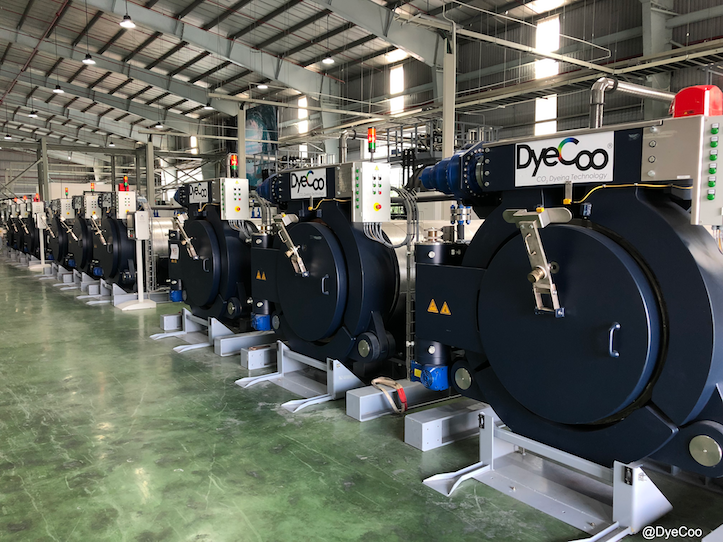Some of the most innovative technologies showcased at ITMA 2023 in Milan were found in the area of the dyeing and finishing of textiles, where huge savings in dyestuffs and finishing chemicals, energy and water, are now possible.
They included the patented and now industrially-proven technology of Dyecoo, headquartered in Weesp, The Netherlands, which uses reclaimed CO2 instead of water as its dyeing medium, in a closed loop process for polyester fabrics. When pressurised, CO2 becomes supercritical and in this state has a very high solvent power, allowing the dye to dissolve easily. Thanks to the high permeability, the dyes are transported deeply into fibres, creating vibrant colours.
CO2 dyeing uses no water and does not need added process chemicals to dissolve dyes and the annual savings achievable from a single machine have been proven to amount to 33.6 million litres of water and 168 tons of chemicals, as well as energy savings, compared to a traditional water-based bath dyeing system.
Digital process
The Endeavour digital dyeing system developed by Cambridge, UK-headquartered Alchemie also produces no wastewater and reduces clean water consumption by up to 95% compared to traditional dyeing. The process delivers dyed fabric with high colour consistency and colour fastness and does not require post dyeing washing steps which leads to an energy reduction of up to 85%. It can deliver any colour shade required and enables on-demand digital colour changeovers in any run length, from a few metres to several kilometres.
Similar energy savings can be achieved with Alchemie’s Novara precision finishing system which utilises a nozzle array to deliver finishing chemistry with millimetre-scale resolution. Finishing chemistries penetrate deeply into the fabric due to the combination of high velocity liquid jetting and precisely-controlled vacuum and textile finishes are applied only where needed, reducing chemistry use and enabling multi-functionality.
Spray dyeing
High-precision spray dyeing is meanwhile being pioneered by companies such as Sweden’s imogo, with its Dye-Max system, which can reduce fresh water, wastewater, energy and chemicals by as much as 90%, compared to conventional jet dyeing systems.
Its application unit consists of a closed chamber containing a series of spray cassettes with precision nozzles for accurate and consistent coverage, in combination with the patented imogo pro-speed valve that controls the volume to be applied. The chamber is equipped with an exhaust system and droplet separator to ensure that the environment around the unit is free from particles.
The savings in treatment water achieved are due to the extremely low liquor ratio of 0.5 litres per kilogram of fabric. At the same time, the low liquor ratio and the spray process require considerably less auxiliary chemistry to start with, and all of it is used in the process, which also greatly reduces the production of wastewater, with only 20 litres being required for wash at changeovers. The low liquid content in the fabric meanwhile minimises the energy needed for fixation.
These are all now commercially available technologies, ready to push the entire industry forward!.
www.itma.com
